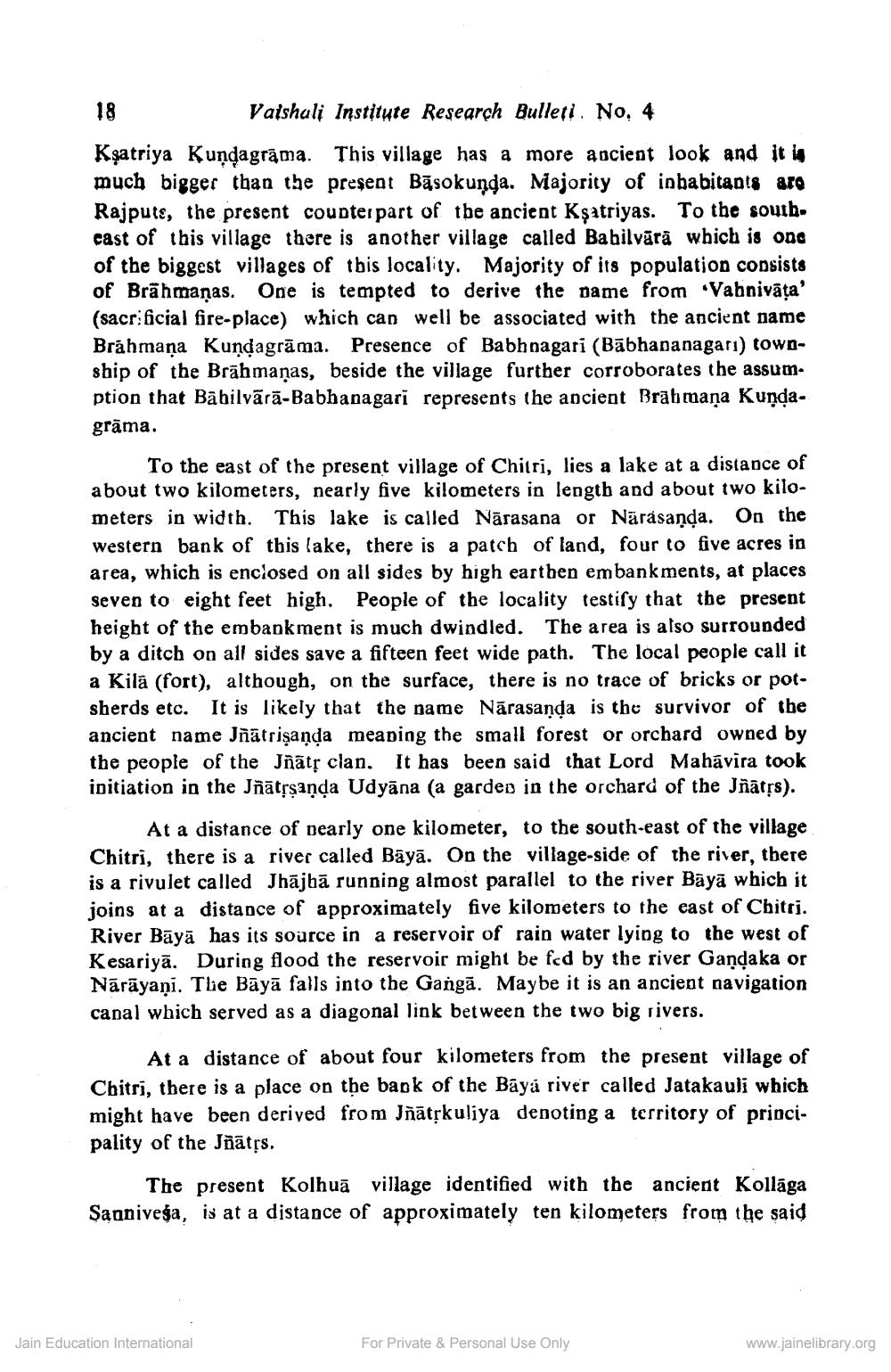________________
18
Vaishali Institute Research Bulleti. No. 4 Kşatriya Kundagrāma. This village has a more ancient look and it is much bigger than the present Bāsokunga. Majority of inhabitants aro Rajputs, the present counter part of the ancient Ksatriyas. To the south. cast of this village there is another village called Babilvārā which is one of the biggest villages of this locality. Majority of its population consists
rāhmanas. One is tempted to derive the name from Vabnivāta' (sacrificial fire-place) which can well be associated with the ancient name Brahmana Kundagrāma. Presence of Babhnagari (Bābhapanagari) towoship of the Brāhmanas, beside the village further corroborates the assumption that Bābilvārā-Babbanagarī represents the ancient Brātmaņa Kundagrāma.
To the east of the present village of Chitri, lies a lake at a distance of
two kilometers, nearly five kilometers in length and about two kilometers in width. This lake is called Nārasana or Närasanda. On the western bank of this lake, there is a patch of land, four to five acres in area, which is enclosed on all sides by high earthen embankments, at places seven to eight feet high. People of the locality testify that the present height of the embankment is much dwindled. The area is also surrounded by a ditch on all sides save a fifteen feet wide path. The local people call it a Kila (fort), although, on the surface, there is no trace of bricks or potsherds etc. It is likely that the name Nārasaņda is the survivor of the ancient name Jñātrişanda meaping the small forest or orchard owned by the people of the Jñāts clan. It has been said that Lord Mahavira took initiation in the Jñātrsanda Udyāna (a garded in the orchard of the Jñātrs).
At a distance of pearly one kilometer, to the south-east of the village Chitri, there is a river called Bayā. On the village-side of the river, there is a rivulet called Jhājbā running almost parallel to the river Bāyā which it joins at a distance of approximately five kilometers to the east of Chitri. River Bāyā has its source in a reservoir of rain water lying to the west of Kesariyā. During flood the reservoir might be fcd by the river Gandaka or Nārāyani. Tlie Bāyā falls into the Gangā. Maybe it is an ancient navigation canal which served as a diagonal link between the two big rivers.
At a distance of about four kilometers from the present village of Chitri, there is a place on the bank of the Bãyä river called Jatakauli which might have been derived from Jñātrkuliya denoting a territory of principality of the Jñātrs.
The present Kolhuā village identified with the ancient Kollāga Şannivega, is at a distance of approximately ten kilometers from the said
Jain Education International
For Private & Personal Use Only
www.jainelibrary.org




